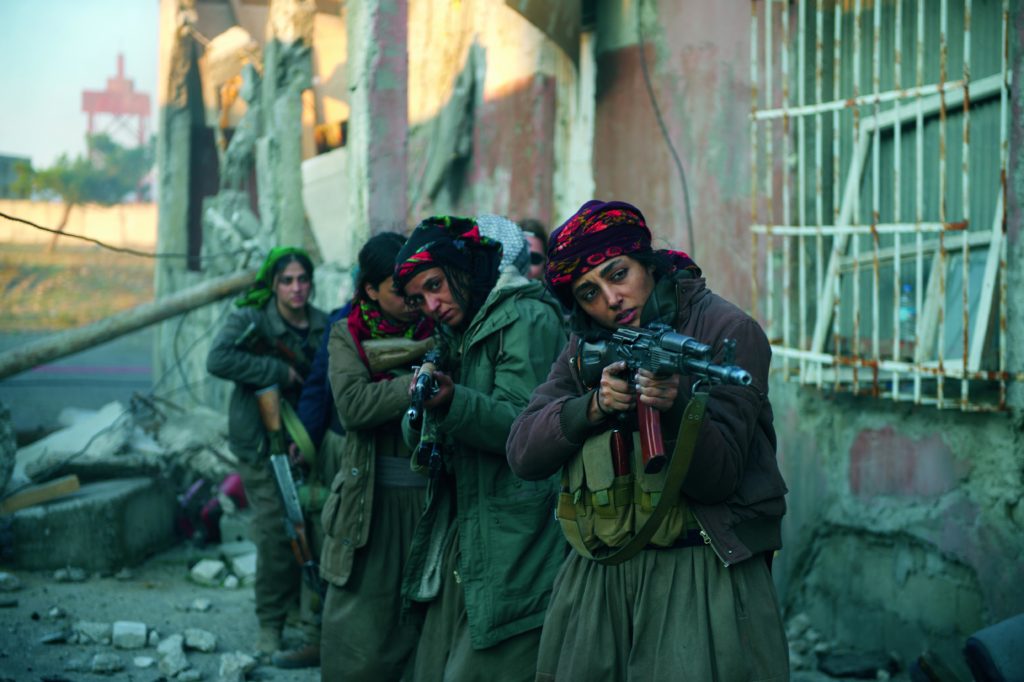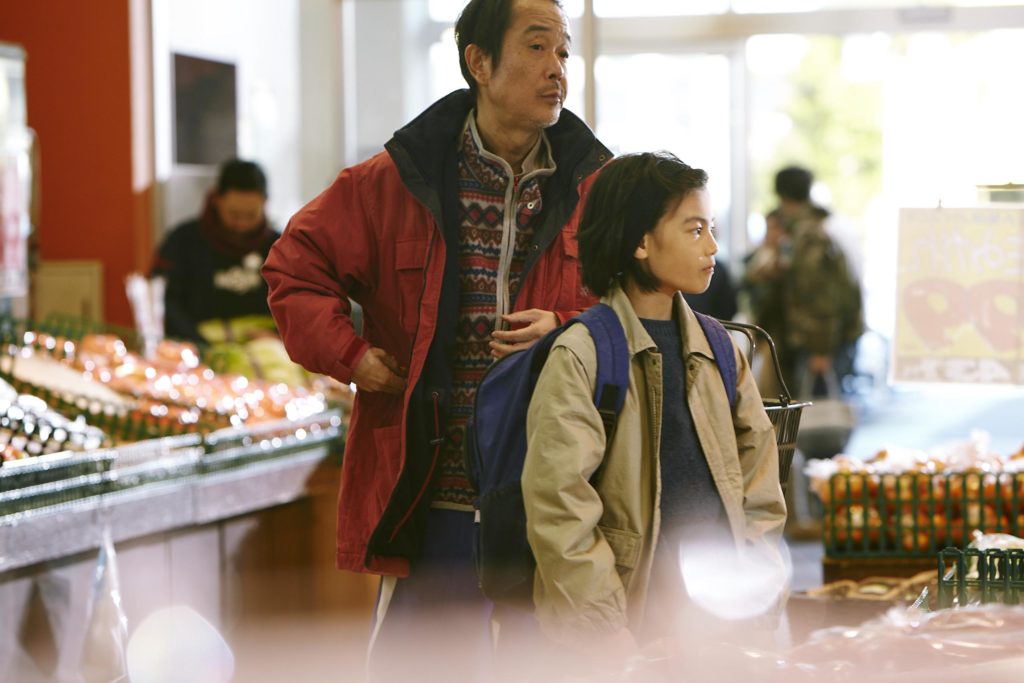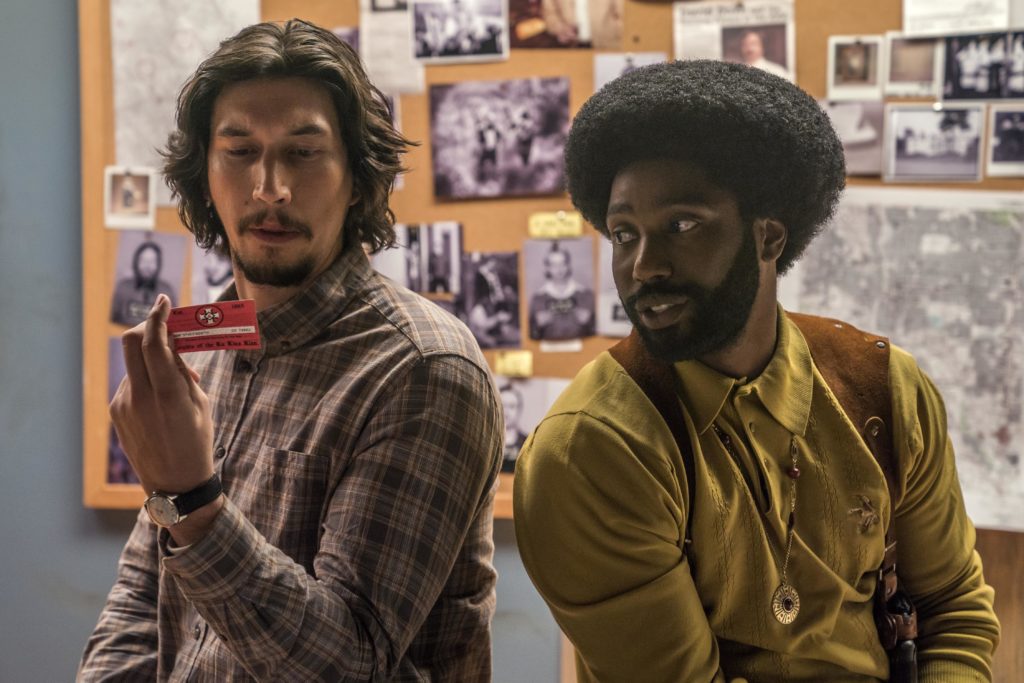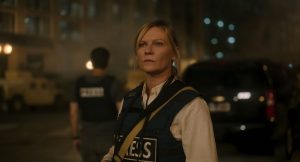Reviews include The Fall Guy, The Idea of You, and Jeanne du Barry.
Cate Blanchett’s Cannes Reconsidered
May 31, 2018
As I write this at the end of May, Cannes is old news.

But the story feels incomplete. Amid the fireworks of the festival’s #MeToo Moment—which justifiably stole the spotlight—another meaningful narrative got sidelined. It’s the story of the 21 films in competition, and how the ones that mattered were uplifted, or capsized, by social and political issues.
In the wake of last year’s 70th anniversary, critics grumbled that festival’s 71st edition felt low-key, both in glitz and substance. But it marked a more significant milestone—the 50th anniversary of May ’68, the most seismic event in Cannes history. It was, famously, the year the New Wave’s romance with revolutionary politics was consummated, as protesters led by Godard and Truffaut stormed the stage at on opening night and held the curtain closed, shutting down the festival, while ushering in the alternative Directors’ Fortnight program. After France has been dragging its feet on issues of sexual harassment, this year saw a rising chorus of female voices challenging the male gaze (along with Asia Argento exorcising the demon of Harvey Weinstein by announcing that he raped her at the festival 11 years ago). Between #MeToo and various global emergencies—from the vortex of right-wing populism to the refugee crisis—you could almost feel art buckling under the pressure to make a difference. And it was hard not to be reminded of May ’68.
Cannes traditionally exists in a bubble. It comes and goes like a lucid dream, a two-week wonderland of inverted values where artistic supremacy outranks all else. Now that the headlines have faded, along with the festival’s hot shimmer of significance, the movies are all that’s left. While the 2018 vintage was far from spectacular, it possessed an uncanny coherence, with an array of intimate, affecting dramas steeped in social issues.
Juries, of course, try to pretend they’re evaluating cinema in a high court impervious to real-world politics. Cannes Jury President Cate Blanchett made all the usual disclaimers about rising above the fray. “We made a pact with one another that we would look at each film as a work of art in and of itself,” she insisted. “We tried to push the political environment outside our choices—there were a couple of films that were quite overtly political but that didn’t influence our decisions.”

She was no doubt talking about Evan Hussan’s Girls of the Sun, a war movie about a female brigade fighting to the death against ISIS, and Spike Lee’s flamboyantly provocative BlackKkKlansman, a ’70s period piece framed as an attack on Donald Trump’s toxic racism. Both films were topped with agit-prop codas that rang out like bulletins from the front lines. While the other movies in competition were far less strident, most of those that made an impact—and those the jury chose to honour, including the Palme D’Or winner, Shoplifters—were almost all dramas of the dispossessed: tales of exiles and outcasts, desperate orphans and undocumented children. If they were existential, they didn’t traffic in angst, but in stateless characters whose actual existence on the planet is deemed invalid because they have no papers.
With widespread use of non-professional actors, these films recall classic neorealism. But given the genre fluidity of digital cinema, with drama and documentary forms freely exchanging their DNA, perhaps a better label for this new wave would be “metarealism.” They included: questing fables (best screenplay co-winners Happy as Lazzaro and Three Faces); gritty vérité character dramas (Shoplifters and the two acting prize-winners, Ayka and Dogman); street-cast odysseys that have an African leper-colony resident portraying a former leper (Yommedine), and undocumented orphans playing undocumented orphans in Beruit (Jury Prize-winner, Capharnaüm).
One aspect of the Competition—visible only to those seeing the films as they unfolded in Cannes—is that festival director Theirry Frémaux seems to have programmed them as sequential courses on a grand narrative menu, with pairings that were too perfect to be coincidental. How else to explain the back-to-back programming of two black-and-white period pieces about musicians in the former Soviet Union trying to make art and love in the shadow of Stalinist bureaucracy (Kirill Serebrennikov’s Summer and Pawel Pawlikowski’s Cold War)? Or seeing three animal-themed dramas dished up in one day—David Robert Mitchell’s Under the Silver Lake, a dog’s breakfast (or brunch) of L.A. noir tropes featuring a serial killer of canines; Lee Chang-dong’s Burning, which begins with a bizarre cat-sitting mission; and Matteo Garrone’s Dogman, the harrowing tale of skinny little Italian man with a dog-grooming shop who is abused by a brutal thug.
Even Banchett admitted that the overarching themes of the program ended up influencing the jury’s choices. At the festival’s final press conference, she said as much when she defended the decision to award a special Palme d’Or to Jean-Luc Godard for Image Book, an incendiary montage of vintage clips that played like a sizzle reel for the apocalypse. “We could not stop talking about it,” said Blanchett. “It lingered with us, and confused and confounded and provoked and angered and excited us. It actually then began to influence our perspective on the rest of the festival.” While the jury was clearly paying homage to Godard’s “extraordinary body of work and his extraordinary influence,” Blanchett stressed that this was not an “honorary” Palme for the 87-year-old auteur, but a special one: “We felt that this film was profoundly important. Not only in and of itself, but in the context of the rest of the films we saw.” It stood in a world apart from the others, she added. “The nature of it is so exceptional, almost outside time and space, that we couldn’t consider it the same way.”
The “real” Palme d’Or went to as film in a more familiar space-time continuum, Shoplifters, by Japan’s Kore-eda Hirokazu. It sits at the opposite extreme of the cinematic spectrum from Godard. With a linear narrative and not an iota of post-modern style, sentiment or commentary, it’s a heart-breaking portrait of a makeshift family that ekes out a living beyond the law. Its win came as a surprise to me, and many others, because the film’s unadorned social realism seemed too modest to electrify a jury. But the award reflected that common sense of social urgency in the program.
Some of us expected Capharnaüm, the tale of an even more desperate makeshift family, to win. Directed by Lebanon’s Nadine Labaki (Where Do We Go Now?), one of only three female directors in competition, it premiered to a 15-minute standing ovation. Labaki was certainly breaking new ground. Not only did most of her cast, both children and adults, have no acting experience. Several of her stars matched their characters to the point that they had no papers, and no future.

Capharnaüm revolves around Zain, a 12-year-old Syrian orphan who ends up parenting a one-year-old baby, hauling him through the backstreets of Beirut in a washbasin strapped to a stolen skateboard. Zain is played by a Syrian refugee, Zain Alrafeea, and the adorable baby boy was “played” by a one-year-old girl, Treasure Bankhole, the daughter of Nigerian immigrants, who were arrested midway through the shoot. Portraying the baby’s mother in the film was Yorkanos Shifera, an orphaned refugee from Ethopia who became homeless and worked shining shoes in the streets of Beirut. She too was arrested as an illegal immigrant during the shoot, but was freed after an intervention by the filmmakers. Labaki spent 6 months shooting 500 hours of footage to make the film, which plays like a documentary, although it’s framed with an unlikely courtroom conceit, as Zain sues his parents for bringing him into the world.
Labaki’s street-cast actors are utterly compelling, and this is the kind of picture that may well win an Oscar. But threading a narrative out of stolen moments plucked from hundreds of improvisational hours is like fabricating a story from wildlife photography. No matter how respectful or well-intentioned the process, the result feels manipulative. And to see Zain, the film’s young star, dragging himself from photo call to press conference, literally falling asleep in front of the world’s media with his face flat on the table like a bored kid in class, you couldn’t help but worry about the fate of Labaki’s young rescue actors.
Shoplifters was not an obvious choice for the Palme, but upon reflection, it was a smart one. Its seamlessly acted social realism conveys implicit truths without sensation or sentimentality, heroes or villains. Kore-eda creates a compassionate portrait of a Japanese family scavenging a future, headed by a happy-go-lucky dad who has made his son an accomplice in his routine shoplifting jaunts. Although the family scrapes to get by, they take in an abused young girl for her own good, effectively stealing her from an unworthy home. These are parents who commit well-meaning crimes for the sake of the kids, and our heart goes out to them, though we know the centre cannot hold. The deceptive intrigue of Shoplifters hijacks our emotions without us even noticing. It never feels like theft. Despite their transgressions, the characters are good people making bad decisions because they look like the best ones available under the circumstances—a predicament anyone can relate to.

Kore-eda’s tightly scripted household drama certainly feels more grounded than the Competition’s more exotic, and expeditionary., dramas of lost children and wayward parents—Capharnaüm‘s anarchic ride through the riddle of Beirut; Asghar Fahardi’s Three Faces, a whimsical mystery tour through the back roads of rural Iran; Yomeddine‘s quixotic fable of a junk dealer and an orphan boy who leave their leper colony in search of the families that abandoned them; Happy As Lazzarro’s even more quixotic fable of a naive Italian peasant who time-travels to the migrant alleys of the big city; Girls of the Sun‘s Kurdish heroines fighting to free their children from ISIS; and Ayka‘s grim odyssey of a woman who abandons her baby moments after giving birth, escaping through the bathroom window of the maternity ward.
Two of my favourite films, Burning and Cold War, offered some relief from the tide of social realism. They were almost purely cinematic, with no children cut adrift, no family squalor crowding out their love stories. Burning, by South Korean director Lee Chang-dong, is exquisitely personal, a spare tale of a young man’s crush hat quietly creeps into a thriller, with wide-open spaces of existential dread worthy of Antonioni. And no film attained a more archly formal beauty than Cold War, by Poland’s Pawel Pawlikowski, a Fifties fugue of unrequited love between an orchestra leader and a female singer separated by a Stalinist culture czar. Despite its sprawling political backdrop, and an ethnographic suite of astounding musical performances, the lovers seem to stand outside history, marooned in an art film that congeals into pure style. In the end, it feels more French than Polish, vintage Nouvelle Vague.
Then there were the Competition’s two radically different bombshells of gonzo filmmaking, Spike Lee’s BlackKkKlansman and Godard’s Image Book. The former is a controversial, and commercial, crowd-pleaser; the latter a film so avant-garde it’s like an installation. But both built spectacular bonfires from the crimes of history, bringing humanity’s past horrors shockingly into the present.

Based on a true story of an African-American cop infiltrating the Ku Klux Klan, BlacKkKlansmen swings from operatic melodrama to cartoonish satire with a heroic swagger of retro-Blaxploitation. The roller coaster of tonal inconsistency is what makes this aggressively profane film about white supremacists so weirdly exhilarating. And its fast-forward coda of Charlottesville and Trump made it impossible for anyone, including the jury, to put politics aside. As Blanchett reported, “the coup de théâtre at the end—spoiler alert—blew us out of the theatre.” The fact that Lee won the runner-up Grand Jury Prize suggests it was the jury’s most serious challenger for the Palme d’Or.
No one makes movies to win competitions, hopefully. But once you arrange them in a race, and they begin to move in and out of each other’s slipstreams, it’s as if they’re jockeying for their place in history. Inevitably their relevance—to the cinema and the world at large—becomes relative. This is what a well-curated competition should do: it draws a portrait of the Zeitgeist. Picking the objectively “best” film from an uneven playing field of budgets and styles is a hopeless task. It’s more about awarding the films that seem to matter at the time, and might leave a lasting impression. Blanchett’s jury made some coherent and intelligent choices.
The festival’s grand narrative is that this was the year #MeToo took Cannes. But on the anniversary of May ’68, as the red carpet hosted stories of race war and poverty, refugees and shattered families, the long lens of world cinema nudged a broader global constituency into the Cannes spotlight.



